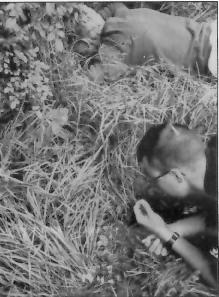Home →
Awareness
Establishing a Connection With Nature
by Tom McElroy
Wilderness survival is a very alluring idea. The dream of living
so closely to nature fuels us all to become better survivalists.
However, as you strive to become a better survivalist, don't forget
about the original goal: Nature.
Yes, wilderness survival is the greatest way to learn to see and
understand the 'spider web like' interdependence between ourselves
and all other things. Yet I find nothing makes me feel more at one
with the earth than an in-depth knowledge of that web. So, I highly
recommend getting out there with your Peterson Field Guides to start
establishing that connection.
Start with whatever excites you, whether it's trees, birds,
plants, or weather, and you start identifying. Once you've
established the name of something, then go deeper, learn its
survival value. For example with trees, is it a hardwood or a
softwood? How strong is the inner bark? What animals eat its buds,
seeds, or nuts? Afterward, write down everything you've learned from
your own observations into a nature journal.
Be sure to include a list of observations of things you cannot
explain. For example, while walking past a cattail swamp I was
alarmed by the calls of the male red wing blackbird. I wonder what
they were calling or why they always seem to be near cattail swamps
and where the females are? Or I've noticed the leaves on the dogwood
trees are already wilting away, yet it's only early summer. Why?
Solving mysteries is an important aspect of understanding nature.
Every mystery you solve bring you one step closer to seeing how it
all fits together.
Make sure to be creative. Experiment with everything. Hang a
birdfeeder by a window in your home and leave a bird identification
guide on a table just inside. Or set up a baited tracking box
(apples and peanut butter work great) and study (and plaster cast)
the tracks of the animals that came by. The only time you won't
learn from nature is when you don't look close enough. So when you
get out in nature, turn over logs and rocks, or get on your belly
and look through the grass. Don't prejudice yourself to looking only
at the big things. Life is everywhere, some just choose not to look.
|
 |
Students at a Standard class check out
Nature up-close. |
One important thing to remember is not to get frustrated.
Studying nature can be a bit overwhelming in the onset. Just take it
one tree at a time. It'll get easier as you learn what to look for.
You'll find your connection with the environment will grow as you
learn more about it. This will lead you to be more passionate about
living in and connecting with the natural world.
From True Tracks, Fall 1998, published by the Tracker
School.
There's more articles from True Tracks on the
Tracker Trail
website. |